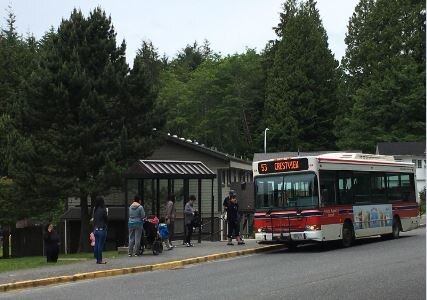Guest Blog Post by Seamus McConville, MCP
Over the last year, Prince Rupert has begun overhauling its Official Community Plan (OCP). This process, which was announced during the Rupert 2030 presentation last November, overhauls the previous OCP adopted in 2007. Considering that the previous document replaced one created in 1979, a lot has changed since then!
As a recently graduated community planner, my field looks to these bylaws as a roadmap of what we want our cities to look like moving forward. Inside each OCP are tangible items that guide its development for 10-20 years. Naturally, I took a keen interest to see what my hometown was looking to do. I’m also very interested in Active Transportation, having supported Complete Streets for Prince Rupert a few years ago. So with that in mind, how can Active Transportation find its way into an OCP?
Prince Rupert’s Plan
Recently, the city released a draft of the plan for public viewing. On the whole, this plan does an excellent job of considering many of the recommendations seen in the 2030 plan introduced by Larry Beasley last year. It also has a heavy focus on infrastructure investment, which is something I find myself tweeting about a lot during my visits to town.
One thing I found curious in this draft was less discussion on concrete steps the city can take towards developing further networks, with the draft suggesting that the city develop a Master Transportation Plan to account for such connections. This is in contrast to the 2007 plan, which did suggest future roads should accommodate new pedestrian and cycling infrastructure.
Communities often create plans simply to focus on transportation, both active and not. Last summer, my neighboring intern from the engineering department in Sooke assisted in data collection for their own Transportation Master Plan. These plans blend everything together - roads, public transit and cycling initiatives into one cohesive document. This allows for a city to prioritize where it then spends transport infrastructure dollars as new linkages are created and existing routes come up for renewal.
Why and How?
There is no doubt that the city wants further development of Active Transportation facilities moving forward. As we know, Active Transportation is anything that isn’t a car, so public transit, walking, cycling and infrastructure for those with mobility considerations are covered under this umbrella.
During the consultation period, 87% of respondents stated that they supported the development of an Active Transportation Plan. For smaller, more active and inclined communities, such facilities may even serve to attract further younger oriented professionals. In 2014, an article in the CBC found that those under the age of 35 were more likely to consider walking, cycling or taking transit over driving. While this case is based in Vancouver, we do not need to look outside of the Northwest to see what other cities are doing on the topic. Rupert’s arch-rival Terrace completed a Transportation Master Plan in 2017, building on its 2009 Active Transportation Plan.
For Prince Rupert, this could not be more of a convenient time to consider a Transportation Master Plan which focuses on Active Transportation. The Union of British Columbia Municipalities (UBCM) has a grant opportunity right now for communities under 25,000 to fund up to $10,000 of an Active Transportation Strategy. These UBCM grants allow for planning maneuvers that larger centres could afford to undertake – my recent poverty reduction study with Port Alberni was undertaken with a similar funding stream!
Money also exists to physically build projects. Right now, the province is preparing for an intake to fund further Active Transportation projects. With this grant coming up in October 2020, this may be a good opportunity for the city to potentially build active transportation opportunities. Terrace got in on the most recent funding, with $200,000 going towards cycling routes.
An Active Future?
There is no denying that active transportation is a hot topic issue right now. With COVID-19 causing record bike sales and Dr. Henry’s orders for British Columbians to “Please Go Outside,” being outside is a big part of our lives. This may continue even after the pandemic ends, with newfound COVID habits being part of our lives moving forward. Furthermore, younger people like myself appreciate it when cities add infrastructure to accommodate our transport choices. This can be a deal maker or breaker when we are considering what city to settle down in.
For me, my own experiences with Active Transportation in Prince Rupert go back years. My childhood was spent cycling from my Seal Cove home to friends on Atlin and Graham along the now-closed CN waterfront. There is also no denying that such developments are embraced by our city – the opening of the Rushbrook Trail is a source of pride. It shows that active transportation is a mainstay of our lives and something we truly cherish in the community. There is also no denying that the city’s fiscal state and prioritizing of our huge infrastructure deficit must come first. With mission-critical facilities such as water treatment or a new fire hall needing urgent renewal, spending money on things that are outside of that spectrum can be challenging. However, applying for such grants will allow the city to save tax dollars to provide those primary services while also funding projects that will improve the quality of life for us all.


